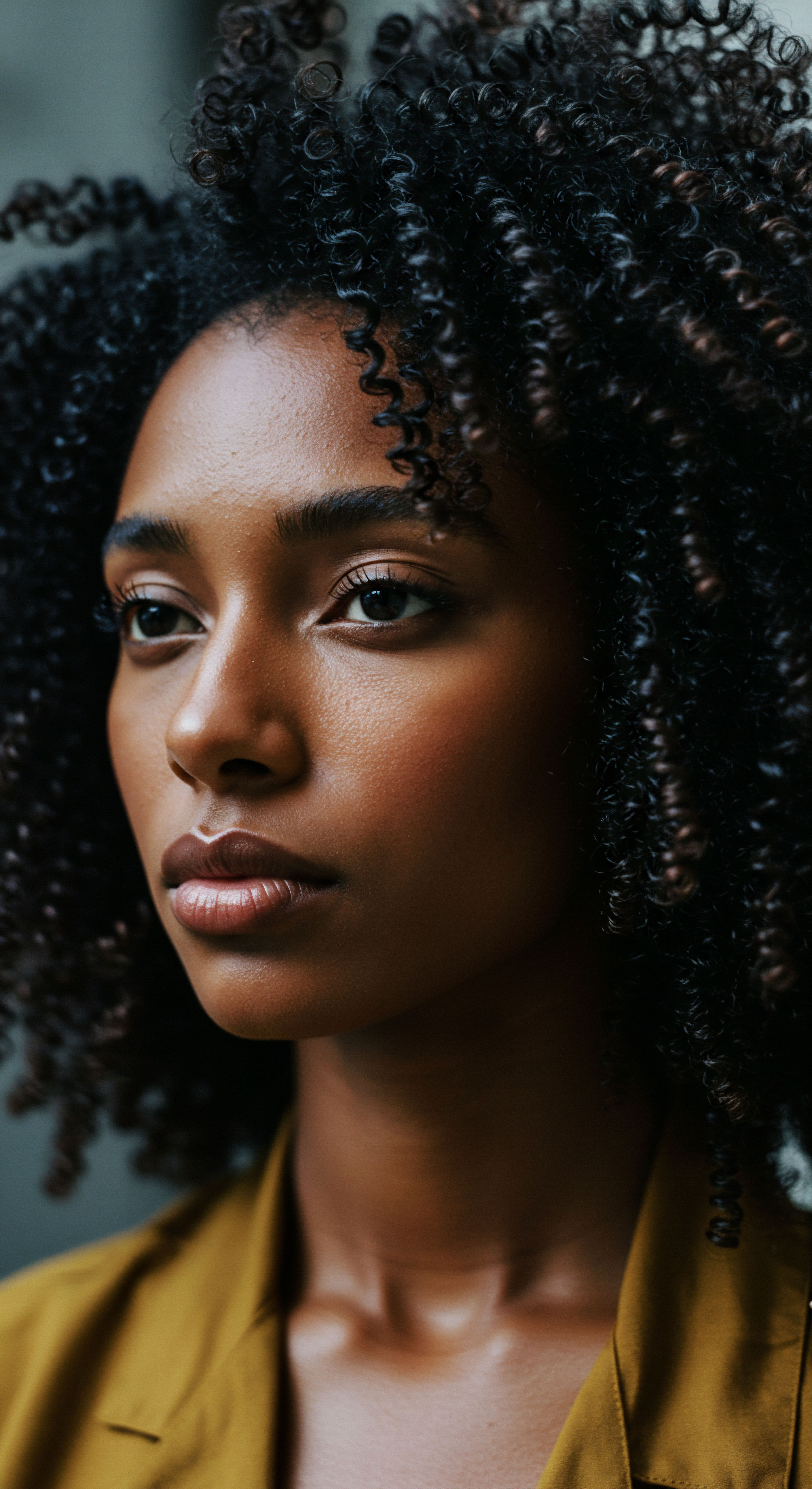
Roots
A whisper from generations past, a gentle touch passed down through hands that understood the earth’s quiet offerings. Our relationship with hair, particularly textured hair, has always been more than mere aesthetics; it is a profound dialogue with our heritage, a living record of ingenuity born from the very ground beneath our feet. Long before laboratories synthesized compounds, our ancestors intuitively understood the potent alchemy residing within plants, their oils, and their gentle extracts.
They looked to the bounty of their surroundings, recognizing in each leaf, seed, or root a potential ally in nurturing the strands that crowned their heads. This understanding, rooted in observation and reverence, forms the very foundation of historical hair moisture practices.
Across diverse landscapes and epochs, from the sun-drenched plains of ancient Egypt to the verdant embrace of the Indian subcontinent, and the resilient spirit of African communities, the quest for hydrated, resilient hair led to similar discoveries. The wisdom was not codified in textbooks but held in the daily rhythm of life, in shared knowledge, and in the hands-on experience of working with nature’s emollients. The common thread was a recognition that hair, much like skin, required sustenance, a shield against the elements, and a delicate balance of hydration to maintain its vitality.

Ancient Civilizations and Their Botanical Secrets
Consider the meticulous grooming rituals of the Ancient Egyptians. Their arid climate necessitated resourceful solutions for maintaining hair health. Archaeological evidence, including analysis of mummified remains, reveals the application of fatty substances, such as palmitic and stearic acids, to hair, suggesting their use as styling and moisturizing agents during life. Beyond animal fats, plant-based oils were indispensable.
Sesame oil, castor oil, balanos oil, and moringa oil were readily available and applied for their nourishing properties. These weren’t simply for shine; they were protective layers against the harsh desert environment, designed to lock in moisture and prevent brittle strands.
Ancient cultures intuitively recognized nature’s capacity to provide profound moisture and protection for hair, shaping timeless traditions.
Similarly, the Indian Subcontinent, with its rich Ayurvedic traditions, pioneered a sophisticated system of hair care that celebrated the deep connection between wellness and botanical ingredients. Texts dating back thousands of years describe the use of various plant extracts and oils. Coconut oil, a staple, was cherished for its ability to penetrate the hair shaft and reduce protein loss, offering deep conditioning.
Sesame oil, with its lignan compounds, served as a foundational base for many Ayurvedic cosmetic preparations. These were not merely superficial applications; they were seen as vital components of overall health, contributing to the hair’s inherent strength and sheen.
- Castor Oil ❉ Valued in ancient Egypt and traditional Chinese medicine for promoting hair growth and soothing the scalp, it is rich in ricinoleic acid, which possesses anti-inflammatory and antimicrobial qualities.
- Olive Oil ❉ A revered liquid in ancient Greek culture, this oil, rich in monounsaturated fats and antioxidants, was used to nourish the scalp and strengthen hair.
- Coconut Oil ❉ A cornerstone of Ayurvedic practices, its lauric acid content allows it to penetrate the hair shaft deeply, reducing protein loss and providing significant hydration.
Across the African continent, a diverse array of plant-derived ingredients formed the bedrock of hair moisture practices. Shea butter, extracted from the nuts of the shea tree, was, and remains, a celebrated sealant, rich in vitamins and essential fatty acids that absorb easily into the hair, enhancing softness and retaining hydration. Various indigenous oils and butters were selected based on regional availability and their observed benefits for moisture retention and hair resilience. These practices were deeply interwoven with cultural identity, serving not only practical purposes but also symbolizing status, community, and connection to ancestral wisdom.
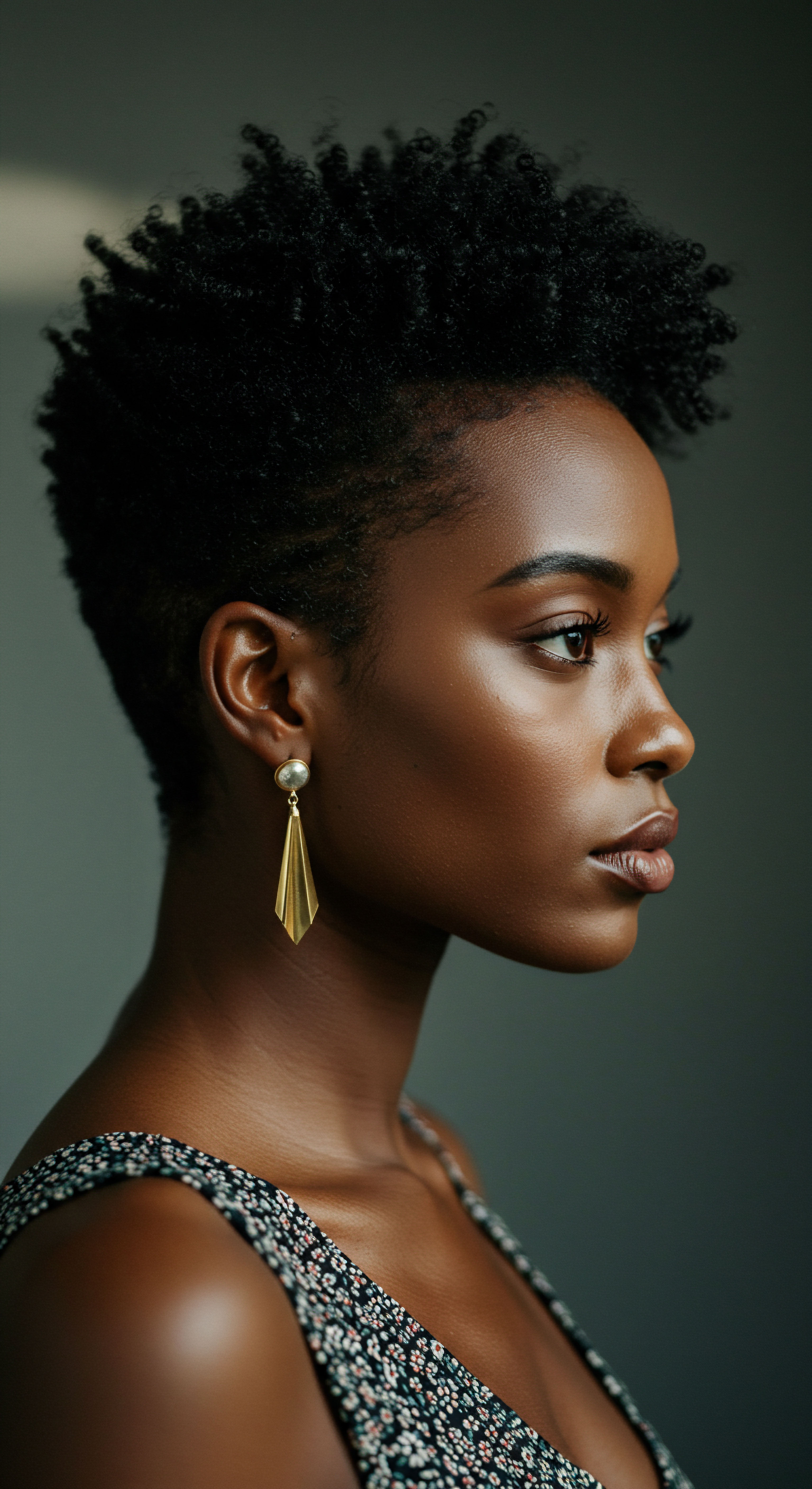
The Elemental Understanding of Hair’s Needs
The underlying principle in all these historical applications was a recognition of hair’s fundamental need for lipids and humectants. While the scientific terminology was absent, the practical understanding was acute. Fatty oils and butters provided an external coating, mimicking the scalp’s natural sebum, thereby creating a barrier that minimized water loss from the hair shaft. This physical protection was paramount in preventing dryness and brittleness, particularly for hair types that are naturally prone to moisture evaporation.
Furthermore, many plant extracts contained natural humectants—substances that attract and hold onto water. Aloe vera, for instance, a succulent plant found in many ancient civilizations, was used for its soothing and hydrating properties, offering a gentle, cooling moisture. The combination of these emollients and humectants provided a comprehensive approach to hair moisture, addressing both the external barrier and the internal hydration of the hair fiber. This dual action, discovered through generations of trial and observation, underscores the profound wisdom embedded in historical hair care traditions.

Ritual
To truly appreciate the wisdom of historical hair moisture practices, one must look beyond the ingredients themselves and consider the profound ways in which they were applied. These were not simply quick applications; they were often elaborate, mindful rituals, imbued with cultural significance and a quiet understanding of self-care. The methods of preparation, the timing of application, and the communal aspects of these practices elevated them from mere grooming to meaningful acts of personal and collective well-being.
Consider the transformation of raw plant matter into potent elixirs. It was a patient, hands-on process, often involving grinding, infusing, or boiling. For example, in ancient India, an effective early shampoo was crafted by boiling Soapberries (Sapindus) with dried Indian Gooseberry (Amla) and other herbs, then straining the mixture to yield a cleansing yet conditioning liquid.
This deliberate preparation ensured the extraction of beneficial compounds, making the ingredients more bioavailable and effective for hair and scalp. The process itself was a testament to dedication, a slow art that contrasts sharply with the rapid-fire convenience of modern products.
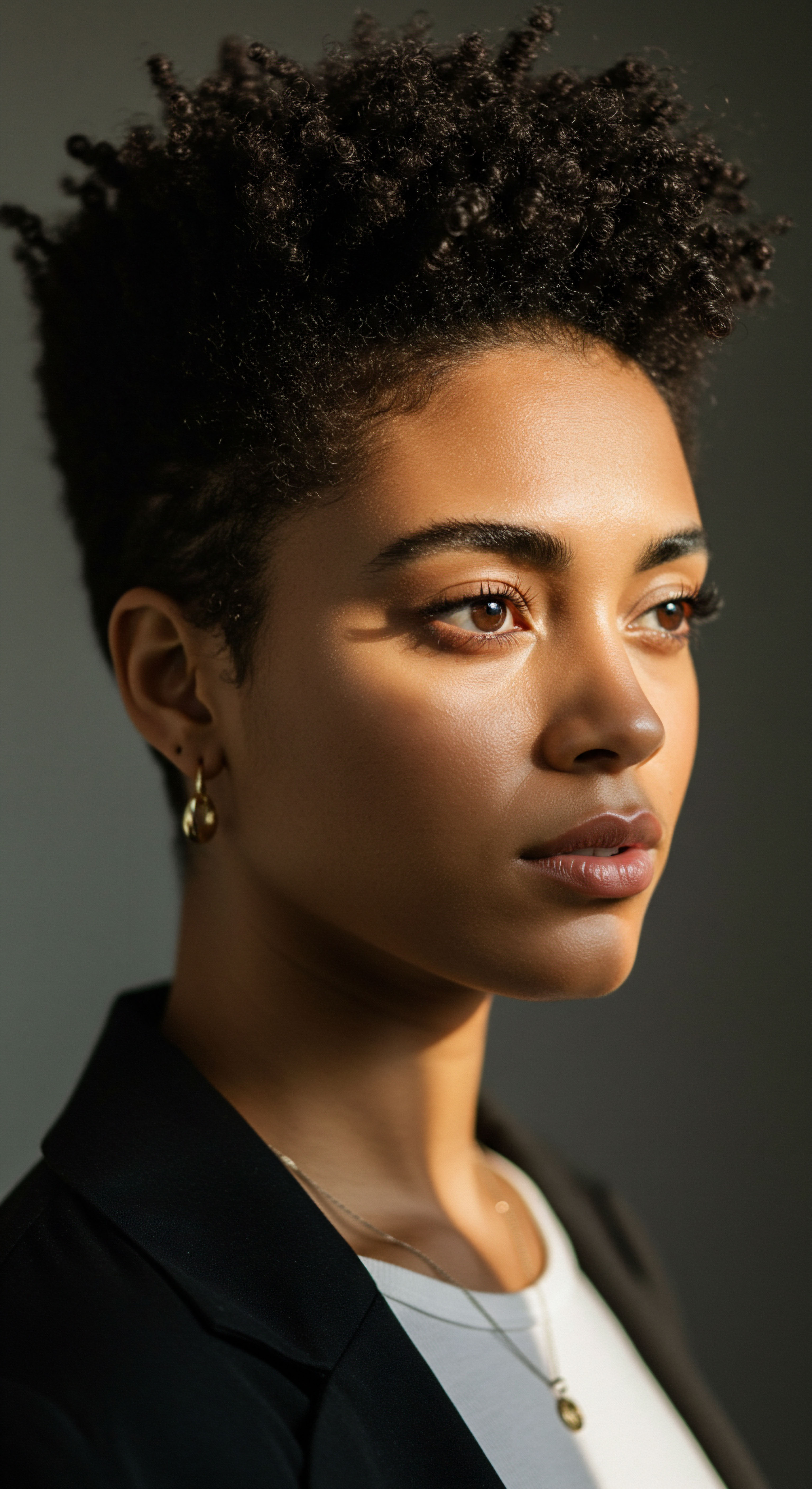
Preparation and Application Methods
The techniques varied by ingredient and culture, yet a common aim was to maximize absorption and benefit.
- Oil Infusion ❉ Many historical practices involved infusing carrier oils with herbs and botanicals. This allowed the fat-soluble compounds from the plants to transfer into the oil, enriching its properties. Sage, rosemary, and chamomile, for example, were infused into oils and water in medieval Europe for hair washing and conditioning.
- Paste and Mask Creation ❉ Ingredients like Fuller’s Earth (multani matti) were used as pastes to adsorb excess grease, while others, such as Henna, were applied as masks not only for color but also for their conditioning properties. The preparation of these masks often involved mixing powders with water, oils, or other liquids to achieve the desired consistency for application.
- Direct Application and Massage ❉ Once prepared, these natural moisturizers were often massaged directly into the scalp and along the hair strands. The practice of Champi, or Indian head massage, is a prime example. This ritual combined the application of plant oils like castor, sesame, or almond with deep, intentional massage to the head. This physical manipulation improved blood circulation to the hair follicles, thereby facilitating the delivery of nutrients and enhancing the oil’s moisturizing effects.
Historical hair care transcended simple application, becoming a deliberate practice of preparing and applying natural ingredients with mindful attention.
The communal aspect of hair care also played a significant part. In many societies, particularly within African and Indian communities, hair grooming was a shared activity, often between mothers and daughters, or among women in a village. This created a space for bonding, for the transmission of knowledge, and for reinforcing cultural identity. The gentle act of oiling a loved one’s hair became a quiet moment of care, a tangible expression of connection that nourished both the body and the spirit.
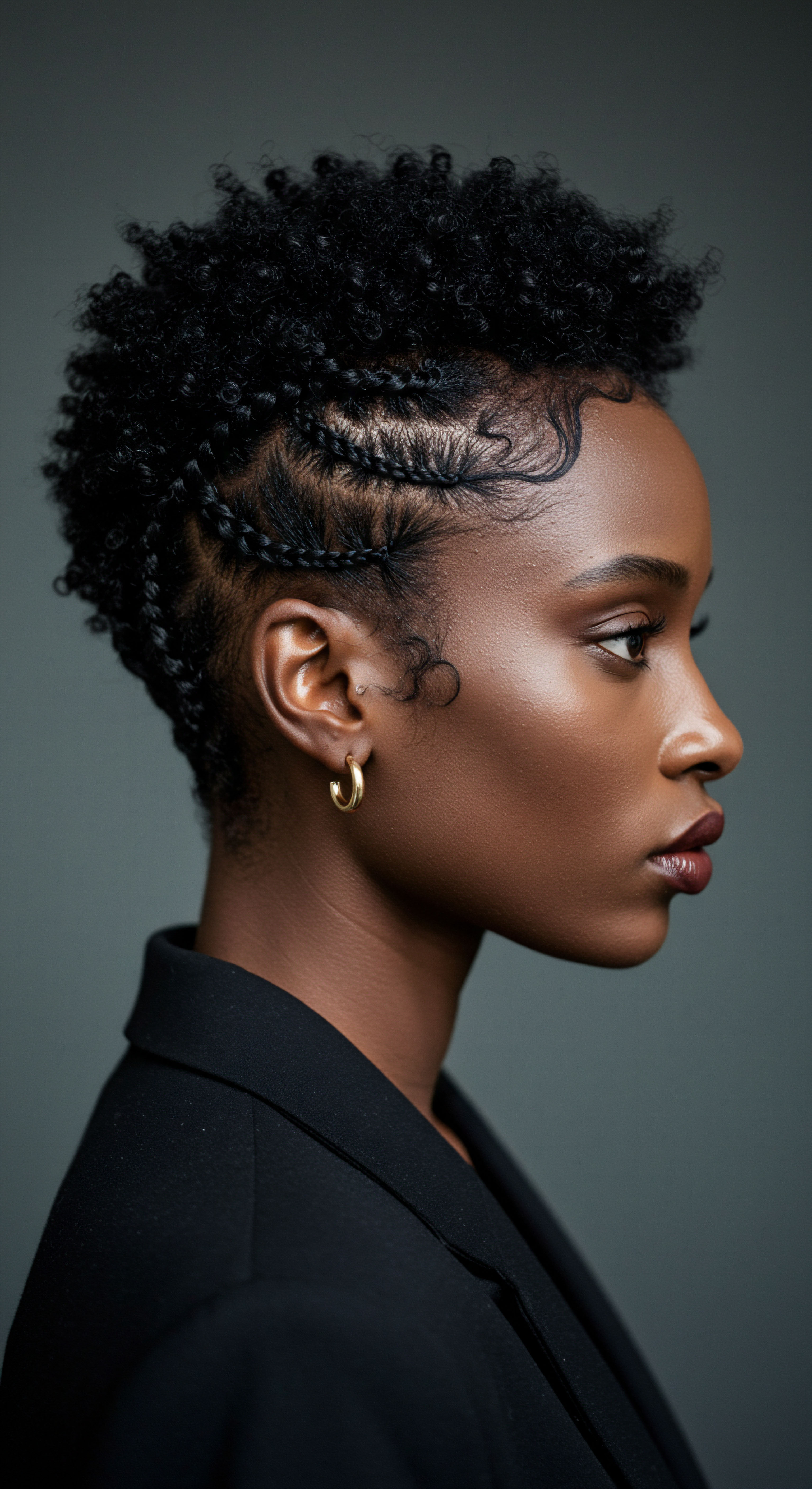
Beyond Mere Conditioning
The rituals extended beyond simply adding moisture. They were often intertwined with beliefs about protection, spiritual well-being, and social status. For instance, in some African communities, elaborate hairstyles and the products used to maintain them served as markers of age, marital status, or lineage. The application of rich butters and oils helped preserve these styles, which were often complex and time-consuming to create, further emphasizing their cultural importance.
The deliberate choice of ingredients also reflected a deeper understanding of their properties. Neem, for example, was valued in Ayurvedic practices not only for its conditioning abilities but also for its anti-dandruff and antimicrobial actions, addressing scalp health as an integral part of hair wellness. This holistic approach recognized that true hair vitality stemmed from a healthy foundation, not just superficial shine. The rituals were thus comprehensive, aiming for both immediate cosmetic benefit and sustained health.
| Ingredient Shea Butter |
| Traditional Preparation Extracted from nuts, often warmed and massaged into hair. |
| Observed Benefit Moisture sealant, softness, anti-inflammatory for scalp. |
| Ingredient Amla (Indian Gooseberry) |
| Traditional Preparation Boiled with soapberries for cleansing, infused in oils. |
| Observed Benefit Strengthens hair, prevents premature graying, scalp nourishment. |
| Ingredient Aloe Vera |
| Traditional Preparation Gel extracted directly from the leaf, applied as a soothing hydrator. |
| Observed Benefit Soothing, hydrating, promotes shine. |
| Ingredient Castor Oil |
| Traditional Preparation Cold-pressed from seeds, often warmed for scalp massage. |
| Observed Benefit Moisturizing, growth promotion, anti-inflammatory. |
| Ingredient These methods highlight the resourcefulness and profound understanding of natural elements in historical hair care. |
These historical rituals, with their careful preparation and thoughtful application, underscore a fundamental truth ❉ hair care was not a chore but a cherished practice. It was a quiet acknowledgment of the body as a sacred vessel, deserving of time, attention, and the gentle blessings of the earth. This mindful approach, often lost in our fast-paced world, holds valuable lessons for anyone seeking a more profound connection with their hair.

Relay
How does the wisdom of antiquity, born from observation and sustained by tradition, stand up to the precise scrutiny of modern science? The query invites a deeper exploration, one that seeks to connect the intuitive practices of our ancestors with the molecular understandings of today. It is a bridge between the botanical bounty of the past and the biochemical realities of hair hydration. The answer lies not in dismissing ancient methods as mere folklore, but in recognizing the empirical efficacy that underpins them, often explained by compounds our forebears knew by effect, not by name.
Hair moisture, particularly for textured strands, relies on a delicate interplay of lipids that seal the cuticle and humectants that draw water into the hair shaft. Historically, ingredients were chosen for their apparent ability to soften, lubricate, and reduce breakage. Today, we can identify the specific fatty acids, vitamins, and other bioactive constituents responsible for these benefits.
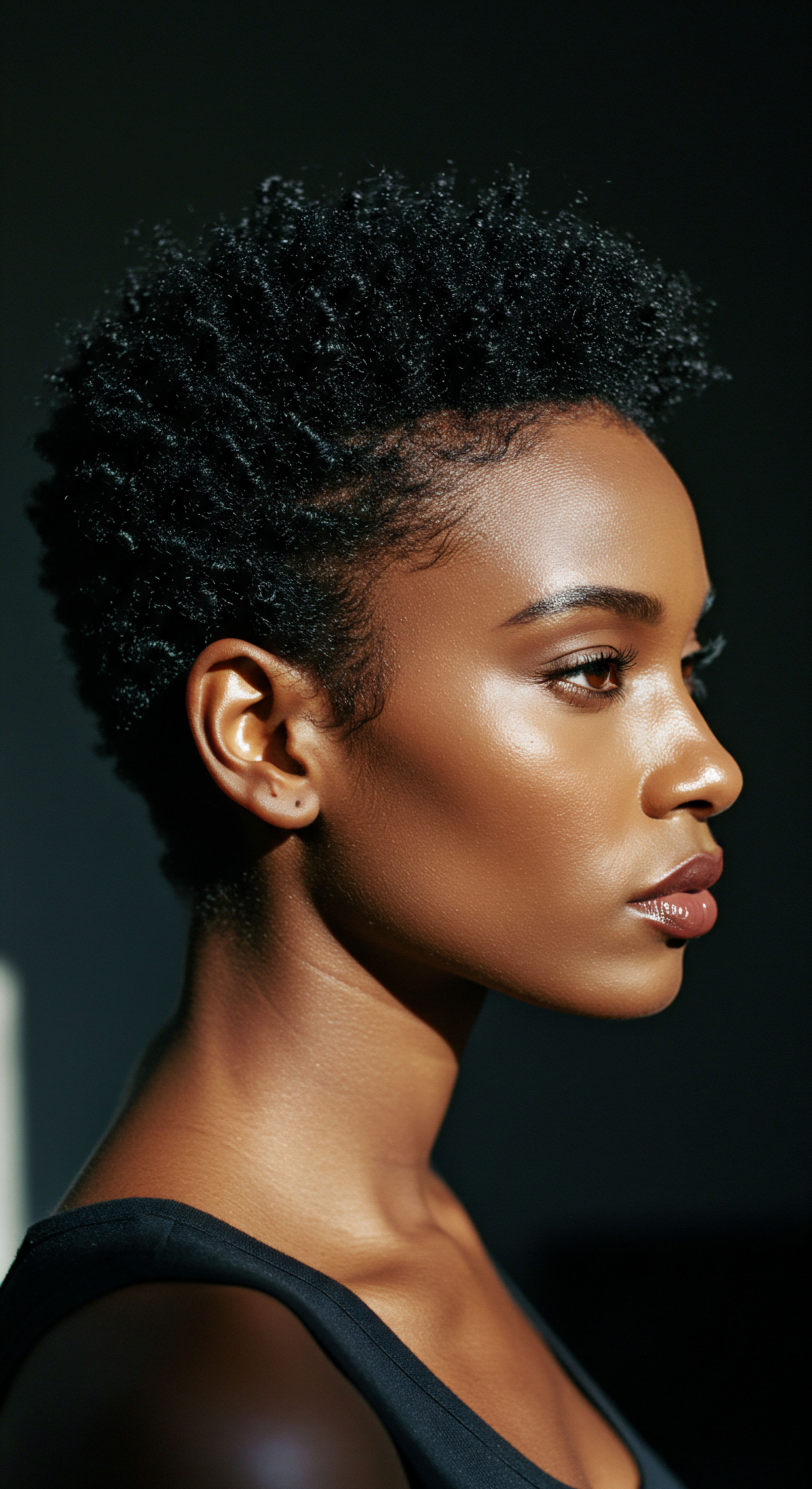
The Biochemical Basis of Historical Hydration
Many traditional oils, such as Coconut Oil, possess a unique fatty acid profile that allows them to penetrate the hair shaft, rather than merely coating it. Lauric acid, a medium-chain fatty acid abundant in coconut oil, has a molecular structure small enough to pass through the cuticle layers, reducing protein loss and providing deep conditioning from within. This is a significant distinction, as many oils primarily function as sealants on the hair’s surface.
Castor Oil, with its high concentration of ricinoleic acid (an omega-9 fatty acid), offers a different but equally important set of benefits. Its thick, viscous nature makes it an effective sealant, helping to lock in moisture and protect hair from environmental stressors. Beyond its sealing capabilities, ricinoleic acid also exhibits anti-inflammatory and antimicrobial properties, contributing to a healthy scalp environment, which is fundamental for healthy hair growth and moisture retention.
The efficacy of historical hair ingredients often stems from their unique molecular structures and fatty acid profiles, enabling deep penetration and protective sealing.
Other oils, like Argan Oil, are rich in oleic and linoleic acids, alongside vitamin E. These components contribute to its protective and nourishing qualities, making it particularly effective for dry or damaged hair by sealing the cuticle and promoting smoothness. The varied compositions of these natural oils meant that different plants offered complementary benefits, allowing historical practitioners to select ingredients based on specific hair needs, even without knowing the precise chemical reasons.

Uncommon Insights Abyssinian Seed Oil’s Protective Role
While coconut and castor oils are widely discussed, less common but equally compelling data exists regarding other traditional ingredients. Consider the protective qualities of Abyssinian Seed Oil (Crambe abyssinica), an oil with a long history of use in certain African hair care traditions. Research has shown that this oil, rich in C22 unsaturated fatty acid triglycerides, offers tangible benefits for textured hair, which is often more susceptible to damage due to its unique structural characteristics. A study exploring the protective effects of natural oils on African hair found that Abyssinian seed oil helped maintain cortex strength, mitigated solar radiation-induced degradation of melanin, and increased cuticle softness.
This particular insight is compelling because it points to a specific, research-backed mechanism for an oil that might not be as universally recognized as others, yet it played a quiet, powerful role in preserving the integrity of African hair fibers against environmental stressors. The ability of the oil to soften the hair cuticle is particularly significant for textured hair, as cuticle cells in curly hair types are sometimes not laid as flatly, potentially leading to increased porosity and moisture loss.
This example underscores a deeper truth ❉ the efficacy of historical practices was often empirically observed long before modern science could elucidate the underlying mechanisms. The knowledge was passed down because it worked, providing tangible results in the maintenance of hair health and beauty.

The Interplay of Environment and Ingredient Selection
The selection of natural ingredients was not arbitrary; it was deeply intertwined with local biodiversity and environmental conditions. Communities living in arid regions, like those in ancient Egypt, relied on oils that provided heavy sealing and protection against moisture evaporation. In contrast, cultures in humid, tropical environments, such as parts of India, utilized ingredients that could manage moisture absorption and provide lighter conditioning. This geographical and ecological intelligence guided the historical use of specific plants for hair moisture.
The traditional knowledge systems, like Ayurveda and various African ethnobotanical practices, categorized plants by their observed effects and energetic properties, which often correlated with their biochemical composition. For instance, plants considered “cooling” or “soothing” often contained anti-inflammatory compounds, while “nourishing” ingredients were rich in lipids and vitamins. This holistic framework allowed for sophisticated, albeit non-scientific, prescriptive hair care.
| Fatty Acid Lauric Acid |
| Prevalent in (Historical Examples) Coconut Oil |
| Hair Benefit Deep penetration, reduces protein loss, strengthens hair. |
| Fatty Acid Ricinoleic Acid |
| Prevalent in (Historical Examples) Castor Oil |
| Hair Benefit Moisturizing, sealant, anti-inflammatory, antimicrobial. |
| Fatty Acid Oleic Acid |
| Prevalent in (Historical Examples) Olive Oil, Argan Oil, Almond Oil |
| Hair Benefit Nourishing, conditioning, helps with dryness. |
| Fatty Acid Linoleic Acid |
| Prevalent in (Historical Examples) Argan Oil, Almond Oil |
| Hair Benefit Moisturizing, conditioning, anti-inflammatory. |
| Fatty Acid C22 Unsaturated Fatty Acids |
| Prevalent in (Historical Examples) Abyssinian Seed Oil |
| Hair Benefit Maintains cortex strength, mitigates solar damage, softens cuticle. |
| Fatty Acid The diverse fatty acid profiles of natural oils provided a spectrum of benefits for historical hair moisture. |
The continued study of these historical ingredients through a modern scientific lens offers valuable insights for contemporary hair care. It reinforces the notion that sometimes the simplest, most time-tested solutions are indeed the most effective. The wisdom passed down through generations, often dismissed as anecdotal, frequently holds profound truths awaiting scientific validation. This convergence of ancient practice and modern understanding provides a richer, more grounded approach to nurturing hair.
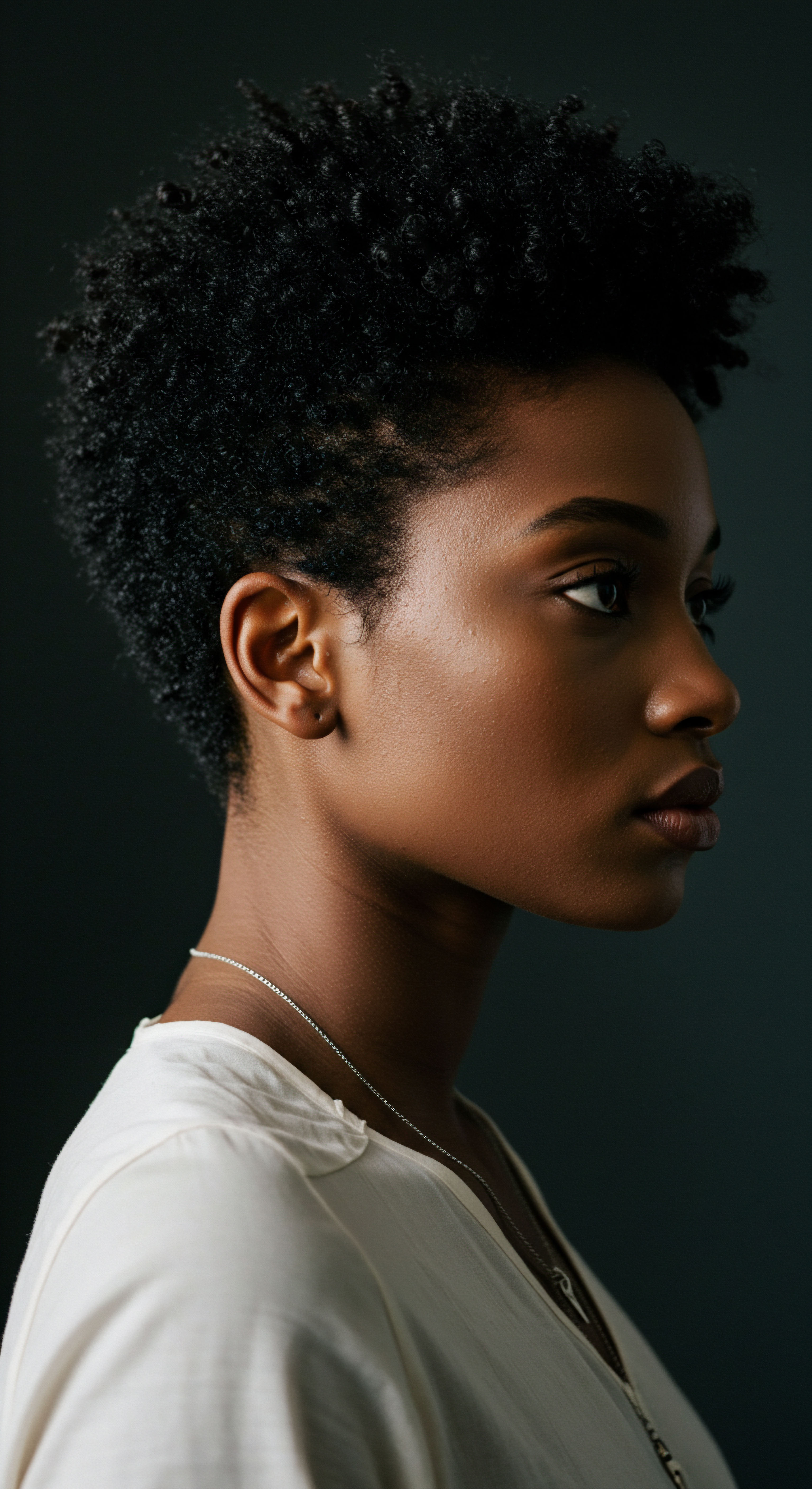
Reflection
As we trace the lineage of hair moisture practices through the annals of history, a profound realization settles upon us ❉ the quest for hydrated, resilient hair is not a modern phenomenon, nor is the ingenuity required to achieve it. From the fatty preparations of ancient Egypt to the elaborate oiling ceremonies of India and the deeply rooted botanical traditions of Africa, our ancestors understood, with an intimate knowing, that hair is a living extension of self, deserving of reverence and nourishment from the earth. Their methods, born of necessity and sustained by generations of observation, speak to a deep attunement with nature’s rhythm.
The natural ingredients they chose—oils, butters, and plant extracts—were not random selections but precise responses to hair’s inherent needs. They recognized the power of lipids to seal, of humectants to draw in moisture, and of botanical compounds to soothe and strengthen. This historical tapestry, rich with ingenuity and cultural meaning, offers more than just a list of ingredients; it provides a philosophy of care. It is a quiet invitation to slow down, to connect with the origins of our beauty practices, and to rediscover the potent simplicity of nature’s offerings for our hair.

References
- Chun, Hea Sook, and Kyu Mi Park. “A Study on the Hair Removal Culture of Ancient Egypt.” Journal of the Korean Society of Cosmetology 19, no. 1 (2013) ❉ 125-134.
- Gupta, A. and N. Sharma. “Hair Oils ❉ Indigenous Knowledge Revisited.” Indian Journal of Dermatology, Venereology, and Leprology 79, no. 5 (2013) ❉ 654-667.
- Madnani, Nina, and Kaleem Khan. “Hair Cosmetics.” Indian Journal of Dermatology, Venereology, and Leprology 79, no. 5 (2013) ❉ 654-667.
- Nayak, M. “The History of Shampoo’s Origin and Evolution.” ScienceIndiamag, January 14, 2025.
- Oresajo, C. and S. Pilla. “Black Skin Cosmetics ❉ Specific Skin and Hair Problems of African Americans and Cosmetic Approaches for Their Treatment.” In Berardesca E, Leveque JL, Maibach HI (eds), 2007.
- Pérez-Sánchez, A. et al. “History of Natural Ingredients in Cosmetics.” MDPI, 2023.
- Rueda, C. et al. “The Chemistry and Applications of Sustainable Natural Hair Products.” National Academic Digital Library of Ethiopia, 2014.
- Sadgrove, N.J. and G.L. Jones. “Cosmetopoeia of African Plants in Hair Treatment and Care ❉ Topical Nutrition and the Antidiabetic Connection?” MDPI, 2020.
- Tiwari, R. et al. “Development and Evaluation of Herbal Hair Serum ❉ A traditional way to Improve Hair Quality.” The Open Dermatology Journal 15 (2021) ❉ 52-59.
- Verma, K. et al. “A Critical Analysis of the Usage of Herbal Products Amidst South Indian Population for the Treatment of Alopecia.” Biosciences Biotechnology Research Asia 20, no. 2 (2023).
- Yadav, Taruna. “The Ancient Art of Hair Oiling.” Newsweek, August 24, 2022.
- Zaid, Randa. “Why We Should Be Using 5 Ingredients Ancient Egyptians Used To Promote Beautiful, Healthy Skin.” Green Union, July 10, 2022.